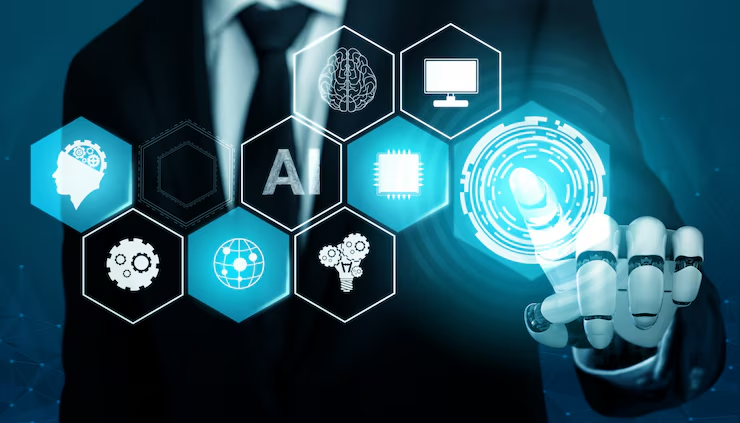Software development is a dynamic field, constantly reshaped by technological advancements and evolving user demands. Staying ahead requires embracing emerging trends and anticipating future shifts. This blog explores key trends transforming software development and predicts what lies ahead, while highlighting how our CMS solutions empower businesses to navigate this fast-changing landscape.
1. AI and Machine Learning Integration
Artificial Intelligence (AI) and Machine Learning (ML) are revolutionizing software development by enabling automation, smarter decision-making, and personalized experiences. AI-driven tools are streamlining coding, testing, and analytics. Future advancements include:
- Enhanced AI-powered code generation and debugging.
- Natural language processing for intuitive user interfaces.
- Predictive analytics for proactive application optimization.
Our CMS platforms integrate AI and ML capabilities, enabling developers to build intelligent, user-centric web applications efficiently.
2. Rise of Low-Code and No-Code Platforms
Low-code and no-code platforms democratize software development, allowing non-technical users to create applications with visual interfaces and pre-built components. These platforms accelerate development and reduce costs. Future expectations include:
- More advanced tools with enhanced customization options.
- Wider adoption across industries for rapid prototyping.
- Integration with AI for automated feature suggestions.
Our CMS solutions support low-code workflows, empowering businesses to create robust web applications with minimal coding expertise.
3. IoT-Driven Application Development
The Internet of Things (IoT) connects devices to exchange data, driving demand for applications that integrate seamlessly with IoT ecosystems. From smart homes to industrial automation, IoT is reshaping software development. Key focuses include:
- Secure APIs for reliable device communication.
- Scalable architectures to handle massive data streams.
- Real-time analytics for IoT-driven insights.
Our CMS platforms facilitate IoT integrations, enabling developers to build secure, scalable web applications for connected ecosystems.
4. Progressive Web Applications (PWAs)
PWAs combine the best of web and mobile apps, offering fast load times, offline functionality, and push notifications. As mobile usage grows, PWAs are becoming a cost-effective solution. Future trends include:
- Increased adoption for cross-platform experiences.
- Enhanced performance with advanced caching techniques.
- Broader support for native-like features.
Our CMS solutions are optimized for PWA development, helping businesses deliver fast, engaging web experiences across devices.
5. DevOps and Continuous Delivery Evolution
DevOps practices, emphasizing collaboration and automation, have accelerated software delivery. Continuous delivery ensures rapid, reliable releases. Future developments include:
- AI-driven automation for testing and deployment.
- Enhanced CI/CD pipelines for faster release cycles.
- Greater focus on observability and monitoring.
Our CMS platforms support DevOps workflows, integrating with CI/CD tools to streamline web application development and deployment.
6. Blockchain Beyond Cryptocurrency
Blockchain’s secure, decentralized nature is expanding into software development, enabling applications like smart contracts and DApps. Its transparency and immutability drive innovation. Expected advancements include:
- Wider adoption in finance, supply chain, and healthcare.
- Simplified frameworks for blockchain integration.
- Enhanced scalability for enterprise-grade DApps.
Our CMS solutions enable blockchain-compatible web applications, supporting secure and transparent digital platforms.
7. Cross-Platform Development Growth
With diverse devices and operating systems, cross-platform frameworks like React Native, Flutter, and Xamarin are gaining traction. These tools reduce development time and costs. Future trends include:
- Improved performance for native-like experiences.
- Expanded support for emerging platforms.
- Streamlined debugging and testing tools.
Our CMS platforms integrate with cross-platform frameworks, enabling developers to reach broader audiences with a single codebase.
8. Prioritizing Cybersecurity
As cyber threats evolve, cybersecurity is a top priority in software development. Building secure applications requires proactive measures. Key strategies include:
- Embedding encryption and authentication from the start.
- Regular vulnerability testing and patching.
- Compliance with global data protection standards.
Our CMS solutions incorporate robust security features, ensuring web applications are protected against modern threats.
Conclusion
The future of software development is brimming with possibilities, driven by AI, low-code platforms, IoT, and blockchain. By embracing these trends, developers can create innovative, secure, and user-focused applications. Our CMS platforms are designed to support these advancements, empowering businesses to build cutting-edge web solutions that thrive in a dynamic digital environment. Visit our official website to explore how we can help shape your software future.

